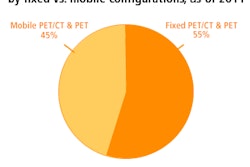Monday, November 28 | 11:00 a.m.-11:10 a.m. | SSC14-04 | Room S505AB
FDG-PET/CT is showing its prowess in predicting non-small cell lung cancer (NSCLC) tumor metabolic response and length of survival one and five weeks after the start of chemotherapy treatment.Dr. Richard Laine Jr., a nuclear medicine resident at the University of Tennessee Medical Center, and colleagues studied 36 patients with newly diagnosed NSCLC who received a chemotherapy regimen.
"PET/CT scanning has an established utility in the initial staging of non-small cell lung cancer, adding increased sensitivity to detection of nodal and distant metastasis," Laine said. "The role of PET/CT in assessing therapy response in NSCLC is less well-defined. The potential advantage of PET/CT imaging is in the sensitive detection of changes in cellular metabolism, which occurs prior to decrease in tumor size on CT."
The study focused on patients who showed a primary lung tumor and a standardized uptake value (SUV) of greater than 2 on FDG-PET. Each patient was evaluated by FDG-PET/CT at eight days, 22 days, and 36 days after the start of treatment. Metabolic response was defined as a 20% or greater reduction in SUV between PET studies acquired eight days and 36 days after the start of chemotherapy.
The analysis showed 20 patients to be metabolic responders, based on a 20% or greater decrease in mean SUV on the PET scan on day 36, with a mean survival of 756 days. The other 16 patients were considered nonresponders and had a mean survival of 467 days.
Metabolic responders lived significantly longer than metabolic nonresponders, Laine and colleagues concluded. "Our study significantly contributes to data supporting the usefulness of PET/CT in assessment of early response to therapy in NSCLC and in defining optimal timing of PET/CT assessment," he said.
"The detection of early chemotherapy efficacy using PET/CT criteria could direct the choice of further chemotherapy," he added. "Therapy would be optimized by continuing effective therapy and discontinuing ineffective therapy to avoid unnecessary toxicity and guide change to alternative regimens."




















